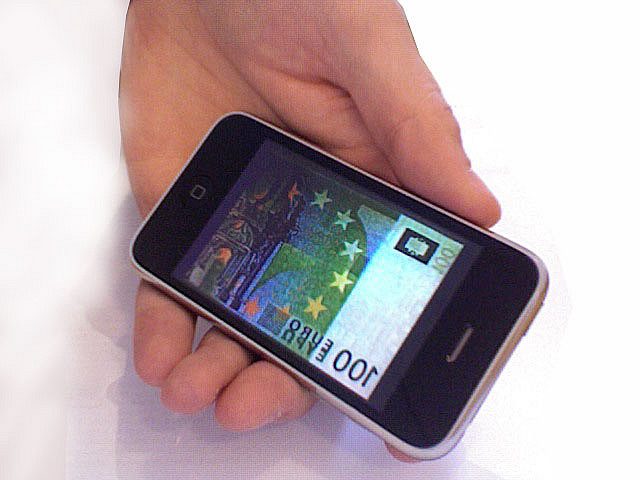For the second year running, everyone’s talking about mobile payments at Mobile World Congress.
James Harrison from Oxygen8 outlines where the industry is, and asks whether payments by SMS could be about to take off.
THE STATE OF MOBILE PAYMENTS TODAY
Options are limited, but they’re certainly growing.
Barclays Pingit launched in February last year which allows users to make payments by simply finding the contact on their phone and O2 Wallet went one step further and allows them to receive money into your wallet and spend in some shops and restaurants.
A handful of retailers, such as Starbucks, have started launching their own apps for Android and iOS allowing customers to pay by mobile.
Paypal also recently introduced their own app, allowing users to make payments while on the go.
Unfortunately, this too has limitations in that you can only make purchases in PayPal-enabled stores for the time being, and there’s no option for sending money to friends and family.
PAYFORIT – THE UNDERDOG
Mobile Payment initiative Payforit on the other hand has come on leaps and bounds since its inception in 2006.
The stand out qualities of this payments platform is that it provides a consistent, transparent and inherently secure standard for paying by mobile on the web, all of which need to be seriously taken into consideration by startup businesses.
There’s no need to register any personal details, and charges can never be made without the consumer’s full consent.
CONTACTLESS
Contactless payments received a boost last year as Visa and Barclaycard tried to capitalise on the Olympics being held in London.
However, a study at the end of the year revealed that retailers had not so far delivered the marketing push needed to move contactless payments forward.
NFC – IT’S STILL EARLY DAYS
This isn’t surprising when realistically NFC is still in its trial phase.
Even though NFC is promised a big future, there are still some fundamental flaws, one of the more poignant being that Apple decided to pass on NFC meaning 250 million people worldwide aren’t able to take advantage of it.
AVOID CUSTOMER CONFUSION
This has definitely cooled consumer and retailer interest and could be considered a blow to the near future of the technology.
There are many mobile payments methods out there to choose from, to the point where we’re in danger of leaving the consumer confused.
SMS PAYMENTS COULD OFFER A SOLUTION
SMS payments may have drawbacks but ultimately with 86% of consumers sending or receiving a text message every week and 30% of consumers interacting with a brand via text message, it is probably the most instinctive, user-friendly method on the market.
The Payments Council is now working on technology to create a secure link between your phone number and your bank accounts in 2014, finally enabling widespread and safe SMS payments.
This is good news for startups.
SMS payments not only provide an easy and convenient way to handle micropayments but also offer benefits for content and service providers.
MORE SECURITY FOR CONSUMERS
Security is improved for customers, as they don’t need to provide credit card or bank account details and billing is handled by the mobile phone carrier, taking away the need to enter separate contracts or verify a customer’s identity.
NOT EVERYONE HAS A SMARTPHONE
There’s also a substantial amount of people in the UK that don’t own a smartphone.
Currently there are 83 million mobiles in use in the UK, consisting of 39 million non-smartphones and 44 million smartphones.
Of course, 2016 is set to see a significant shift with non-smartphone users decreasing to 21 million, however, this is still a substantial amount of consumers that other, more modern methods, such as contactless payments, would be wasted on.
A MILLION BRITONS WITHOUT BANK ACCOUNTS
It’s not something we often think about but there are also over a million people in the UK without access to bank accounts and so SMS payments cater for this perfectly by billing directly to a consumer’s mobile phone account.
THE DOWNSIDES
Unfortunately, the ease of this system does incur drawbacks, as with any mobile payment solution.
Mobile operator’s share of the revenue is traditionally quite high, and in some cases the developer might get just half of what the customer actually paid.
Secondly, prices cannot be set freely (unlike large investments), but companies have to choose from price points that are offered by SMS payment providers such as ourselves.
Startup businesses need to bear in mind the pros and the cons for all methods and ensure that they keep the consumer at the forefront when making their final decision.
SMS payments may have drawbacks but ultimately with 86% of consumers sending or receiving a text message every week and 30% of consumers interacting with a brand via text message, it is probably the most instinctive, user-friendly method on the market.

